➡️ Update 11/3/20 — A new video interview with Flight Design USA importer Tom Peghiny appears at the bottom of this article. —DJ
In the beginning — as Light-Sport Aircraft entered the skies for the first time — German producer Flight Design brought the CTSW to American pilots. It was embraced enthusiastically and the U.S. importer Flight Design USA sold many units to aviators that had waited years for FAA to finalize their no-medical-required LSA segment. CTSW was something of a sports car, agile, quick, high performing but surprisingly roomy.
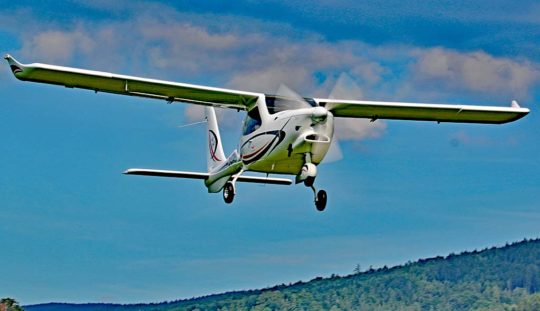
Then came the sophisticated CTLS, wholly redone for the American market. It enlarged the cabin and lengthened the fuselage becoming more deluxe throughout.
Now, we come to F2 in what I’m calling the third generation of the iconic shape that still leads the LSA market after almost 17 years. The one and only example presently in America is currently based at Airtime Aviation in Tulsa, Oklahoma. Find even more info in this article.
F2 Arrives in America
I got to see prototype and introductory show-model versions of F2 and F2e, the electric aircraft that somewhat ironically was the very first to fly in Flight Design’s new F-series. My early glimpses were at Aero 2019 and I wrote up what I observed; see it here.
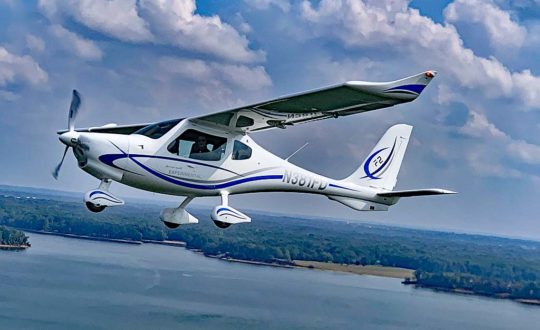
Well, every show was scrubbed except the Midwest LSA Expo in Mt. Vernon, Illinois. Because that one and only event happened — with no negatives regarding the virus, so far as I know — I got to see and fly Flight Design’s latest and greatest, the F2. Not only was the airshow a welcome change from the social barriers everyone had faced over the last few months, but Midwest 2020 provided a venue to see and fly the new model.
“CTSW was a Porsche. CTLS was a Corvette. F2 is a Cadillac,” said Tom Gutmann, Jr., the younger half of the father and son Airtime Aviation team that is the largest light aircraft dealership in the world.
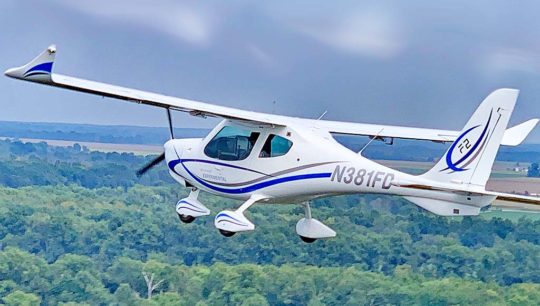
It is also built quite differently. All CTLS are essentially “hand made” with hand-layup molds that display the skill of factory workers yet makes each one unique. For F2, Tom said, Flight Design uses molds created on 5-axis CNC shaping tools so each one is fabricated to precise specifications. You may not be able to see the difference in construction but the new method is far better for serial production.
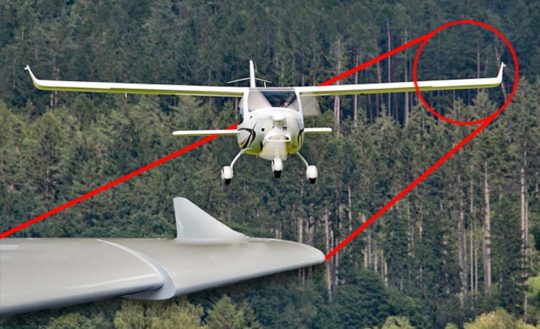
Likewise, F2’s new wing is a major redesign; the outboard sections feature aerodynamic cuffs (nearby photo).
F2’s tail is all-new as well. CTLS’s full-flying stabilator is replaced with a wider stabilizer that has a discrete two-piece elevator with a center section that remains stationary forming what’s often called a duck tail. This aids in meeting the ASTM handling requirement. One result is that the airplane does not pitch up during a departure stall.
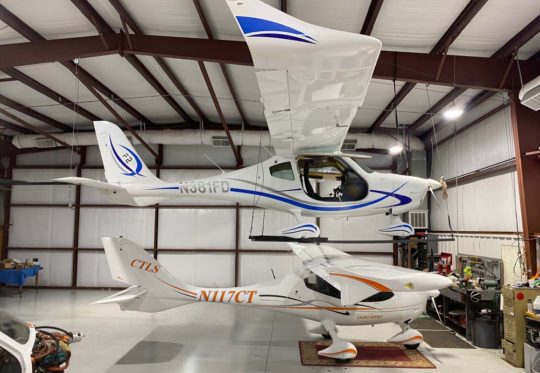
F2’s tail looks notably different than CTLS with a high-aspect-ratio vertical tail and slimmer rudder although the volume is similar. These changes — with the wing cuffs — contribute to better slow-speed handling and genuine spin resistance while still allowing a generous slip and yielding plenty of rudder authority in crosswinds.
Creature Comforts
At 53 inches wide, F2’s cabin is spacious enough to lead the LSA category. The cockpit is wider than a Cessna 172 or 182 and even broader than a Beech Bonanza.
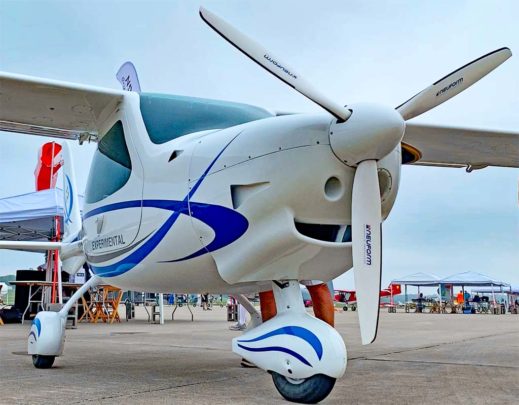
A minor annoyance was turned into a minor feature; the addition of an outside door handle.
The seats in CTLS are very comfortable and even have dual air-bulb adjustment for maximum comfort, but you had to adjust them before you entered. With F2, you can manually slide fore and aft anytime and the seat raises and lowers electrically.
The throttle does double duty; forward for get up and go and pulled aft to apply brakes; it makes for a simplified cockpit.
The baggage space is enormous, among the biggest of all LSA.
However …whew! On a warm day at Midwest LSA Expo, I certainly wished for better ventilation. I understand that has already changed for production models; the F2 I flew is prototype #2, evidenced by “Experimental” on the side of the fuselage.
Flight Design chose to replace Dynon of the CTLS era with Garmin’s G3X Touch avionics. F2 comes with dual 10-inch touchscreens.
Flying F2 — Initial Impressions
With its Rotax 912iS 100-horsepower engine, F2 accelerated briskly to its 52-knot rotation speed breaking ground in roughly 500 feet with a bit of breeze straight down the runway. Importer Tom Peghiny who flew the demo routine with me said to use 70 knots for early climb, 60 knots for best angle, and 80 knots for enroute climb.
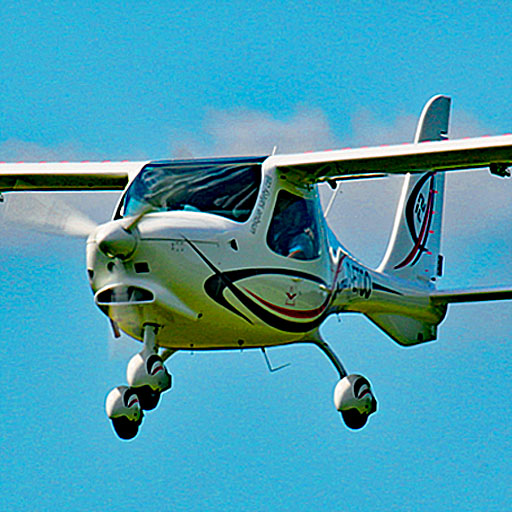
Tom Gutmann compared F2 to CTLS. “We picked the fastest CTLS we have, a Jubilee model that is five or six knots faster than any other CTLS we’ve seen. F2 was four knots faster, with the same engine. Tom has been evaluating F2 vigorously, logging 25 hours in barely over a month.
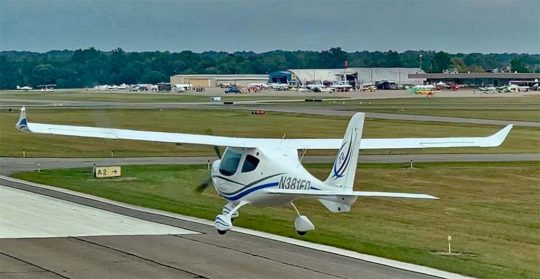
Landings were easier than CTLS, which demands no more than 60 knots on approach unless you’re willing to float well down the runway. F2 was more user-friendly, a phrase I think many will generally use for F2.
With better ventilation and losing a few pounds once in serial production, F2 is a winner for those seeking a luxurious Light-Sport Aircraft. Contact Airtime Aviation and get a demo flight as soon as you can. Until then, here are impressions in video form.
Here is a newly-released video interview with U.S. importer, Tom Peghiny from Oshkosh 2019. It describes the aircraft and the entire F-series from Flight Design.


Dear all:
How did I know the glide ratio of a F2 airplane. They just tell you the glide speed is 70 knots on the Web?
Thank’s a lot.
I’m excited – torn between this F2 and the Bristell. I’ve always liked low-wings and Bristell, VL3, and Arion are my favorite, but this is the nicest high wing I’ve seen, with interesting safety features. (Imaginary purchase at this point)
You may want to look at the Porto Aviation (SEA) Risen or Siren. The Siren is a bit simpler made and is fixed gear. About the price of the planes you mentioned. But the Risen is the fastest and arguably the smoothest flying 2 seater that money can buy. It comes standard with the Rotax 912iS engine but can be upgraded to have a 915iS at some point. The negative is they are fully booked for 2 years. It isn’t as wide as the Bristell but has a glide ratio of 23:1. Whereas the Bristell is 11:1. At FL100, it will extend your flying with a engine out for twice the distance. And the cabin width is 48.4 inches wide. (1.23 m) It is so stable that in turbulence it can fly I believe nearly 30 knots faster. The plane has the least amount of drag of any ultralight/LSA made.
For us, we need a 4 seat, so the F4 with the Rotax 915 iS engine makes the most sense. Especially when flying over the Rockies and the Cascades. There is safety having a turbocharged FADEC controlled engine.
Using the 912 iS engine, the Risen can cruise at 160 knots at 8,000 ft. It is the finest 2 seat low wing, raised gear plane currently made. The F2 can cruise at 160 knots as well but it needs the 915iS engine to do that. Big difference in fuel burn.
With all of that said, my eyes are in the F4 model late next year.
A word to other readers… Much can be found about Risen and Siren on this website; they are very exciting aircraft. However, neither model has declared compliance to ASTM Standards so it cannot be sold in the USA except as a kit aircraft. It is also too fast for present LSA rules. Perhaps it can enter the USA after the new FAA regulations are released in 2023 or 2024. ••• I also expect F4 will not be ready for sale in 2021 as it must also pass a higher level of regulation (read: expensive!) or wait for the new regulations in ’23/’24.
Good reply, Dan. The Risen and Siren though can be bought in fast-build in Italy by any licensed pilot. As of now they are building only in Italy, some 15 miles north of Milan, abeautiful area. They have sold now, if I am correct, 3 Risen airplanes to Americans although none completed to my understanding.
The Bristell has been banned from doing stalls in Australia. Spin accidents. There must be better low wing aircraft.
Looks good. Might consider trading in my 2008 Tecnam p2002 when I learn more.
Looks great! When it can take off and fly for 5 hours, give me a call.
Tanks hold 34 gallons. Even at the 115 knot cruise speed, burning 4.5 gph, you’d have 7.5 hours of endurance (no reserve). Seems like it can already take off and fly for 5 hours…
Jim,
That Rotax 912iS engine should do a bit better than 4.5 gph. Try 3.6-3.8 gph. You should be good for 8 plus hours unless you need to really push it hard.